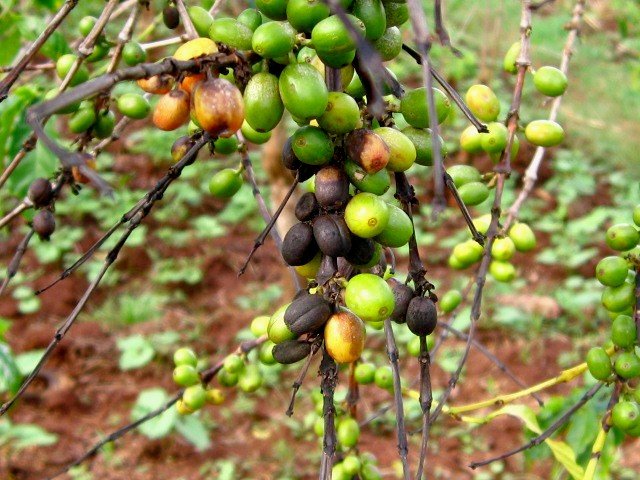Credits: Biovision-Infonet

(c) A.A. Seif, icipe
Colletotrichum kahawae of Arabica coffee only occurs in Africa, and causes major damage in East Africa and Cameroon. Other names of this disease are “coffee berry anthracnose” and “brown blight of coffee”. The characteristic symptom is a progressive blackening of young, expanding coffee berries. This begins as small water-soaked lesions. They rapidly become dark and sunken. As they grow they cause the whole berry to rot. Under humid conditions, pink spore masses become visible on the surface of the lesion.
Berries often drop from the branch at an early stage of the disease. This is a characteristic feature of coffee berry disease. Lesions may also occur on young berry stalks, causing them to be shed before lesions are visible on the berry itself. The disease also affects ripening berries causing a ‘brown blight’ phase. This phase is characterised by typical dark, sunken lesions that envelop the red berry.
The coffee berry disease may also infect flowers under very wet conditions, and causes brown lesions on petals. This disease does not kill trees, but crop losses can be more than 80%. Spore dispersal within the tree is by rain splash. Disease spread from tree to tree and from farm to farm is by coffee pickers, birds or infected seedlings. Wet conditions and temperatures between 15 and 27.7deg C favour disease development.
What to do:
- Plant resistant variety where coffee berry disease is endemic (e.g. ‘Ruiru 11’).
- Prune coffee trees after harvest.
- Strip off diseased berries.
- Remove old stems and thin out branches.
- Timely spray copper fungicide